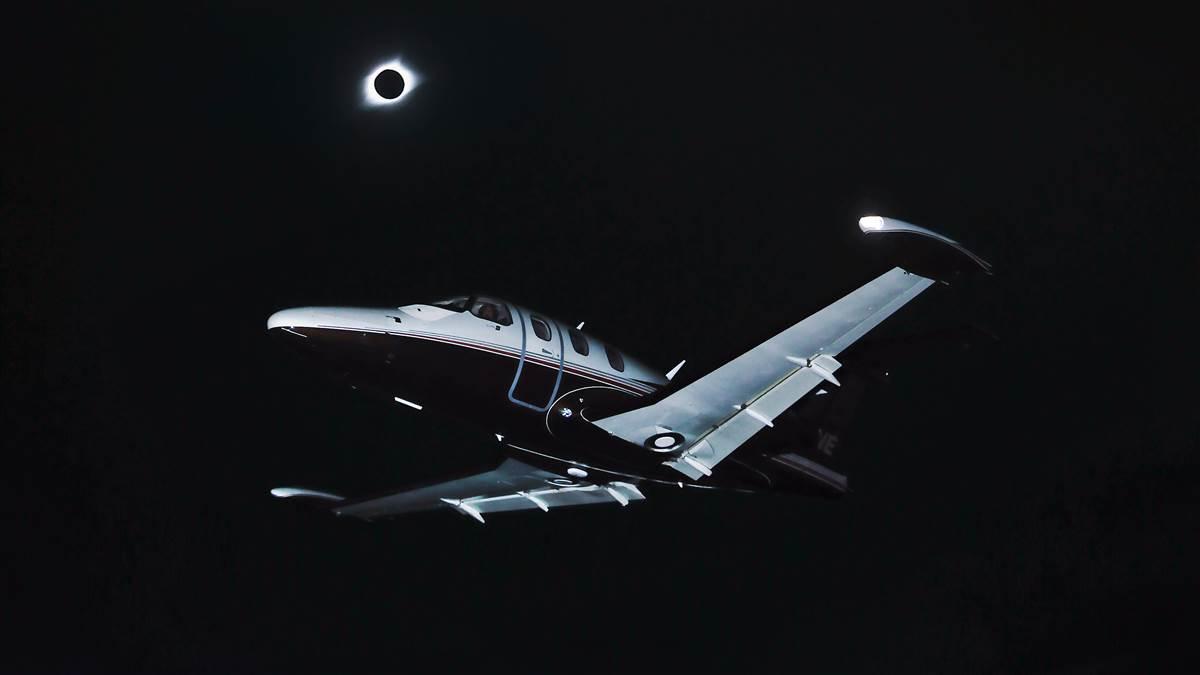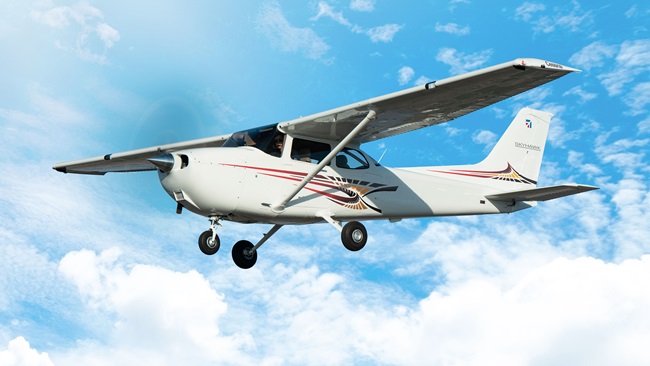Get ready for an encore
Total eclipse returns this April
By Brent D. Holmes
On August 21, 2017, GA pilots flew en masse to airports in the path of a total solar eclipse, which arced across the United States from Oregon to South Carolina.

An encore performance is on tap the afternoon of April 8, 2024. It will be a celestial blockbuster with totality lasting at least 50 percent longer than in 2017. The width of the moon’s shadow will be a massive 121 miles. In the United States the light (er, dark) show will make its debut at Eagle Pass, Texas, at 1:29 p.m. CDT and will exit the United States at Presque Isle, Maine, at 3:35 p.m. EDT.
GA pilots will have a unique opportunity to fly where the total solar eclipse will be visible. The key to enjoying the full, awe-inspiring experience is to be at an airport where the sky is clear, or at least where the clouds do not block the sun. This point was driven home during the 2017 solar eclipse at Southern Illinois University’s Saluki Stadium at Carbondale where Jim Cantore was broadcasting live on The Weather Channel. At the critical point, a stray cloud blocked the sun. Meanwhile, the hundreds of pilots seven miles away at Southern Illinois Airport (MDH) had an unobstructed view.
The total eclipse will be visible in parts of Texas, Oklahoma, Arkansas, Missouri, Illinois, Indiana, Ohio, Pennsylvania, New York, Vermont, and Maine. Even if one is near the edge but still within the path of totality, there will be a decent amount of viewing time.
The goal is to find an airport as close to the center of the shadow’s path as possible. Flying to Waco, Texas, will get you more than four minutes of totality. Austin, Texas, is nearly outside the moon’s shadow but will have one minute 40 seconds of totality. If you are just outside the area of total eclipse, it will be a huge disappointment. You must be within the moon’s shadow as it crosses the Earth to view the total eclipse.
On any given day in April, there is a 50- to 75-percent chance of cloudy skies in each of the states mentioned. That is why GA pilots have an advantage for a successful viewing of the total eclipse. Pilots can look at the prog charts and other maps on ForeFlight or other weather sources. Be prepared to make a last-minute change in destination. Fill the tanks in case you need to fly a few hundred miles to reach an airport with clear skies.
If you are instrument-rated, file your flight plan as much in advance as possible. If favorable viewing weather is forecast for only a small area, you may be in competition with many other pilots attempting to fly IFR to the same airport at the same arrival time.
The entire eclipse will take two and one-half hours from start to finish. It truly is an out-of-this-world experience.The entire eclipse event will take two and one-half hours from start to finish. Bring special glasses. Don’t look at the sun with the naked eye during the partial eclipse phase or you will end up with black spots permanently burned into your retina. Plastic and cardboard glasses can be purchased for around $10.
Just seconds before totality, the last sliver of sun recedes, replaced by a dazzling diamond ring effect. This is immediately followed by “Bailey’s Beads” along the eastern edge of the moon. Then totality suddenly begins. There is no darker black than the blackness of the moon’s disk. The corona is brilliant white and shoots out around the entire disk of the moon. It truly is an out-of-this-world experience.
Venus and Mercury, along with some bright stars, are visible near the sun. It is a mesmerizing experience that ends all too quickly as the moon continues its journey past the sun. Daylight suddenly appears again, and the temperature begins rising. In another hour the eclipse will have ended. But the awesome encounter stays with anyone having witnessed a total solar eclipse. Like me, you may begin researching when and where the next total eclipse will take place on the planet.
I recommend that you loiter a couple hours after the end of the solar eclipse. Attempting to depart MDH in my Saratoga after the 2017 eclipse, I waited in a conga line for more than an hour. The tower did not allow any northbound departures as ATC was overwhelmed with a saturated airspace, complicated by a line of thunderstorms crossing the center of Illinois.
Finally cleared to depart VFR, I flew only a short distance north before landing at Mt. Vernon (MVN) to look at the thunderstorms on radar. I spotted an Eclipse light jet (appropriately named) parked on the ramp. This jet was featured on the cover of the November 2019 AOPA Pilot magazine. The iconic Chris Rose photo (left) captured the Eclipse jet flying in a dark sky over southern Illinois with the total solar eclipse above it. I still have that issue.
There are many GA airports within the path of totality. Contact the FBO at least a month before to learn of any special rules in effect, such as required reservations for ramp space. Also, airports such as Southern Illinois and Lawrenceville-Vincennes International Airport (LWV) are planning special “eclipse” events. In 2017, MDH had food, beverages, tables, and viewing glasses for the hordes of pilots who flew in.
A good resource for learning more about the upcoming eclipse is greatamericaneclipse.com. For an excellent book about these American total eclipses and the role they have played in history, check out Mark Littmann and Fred Espenak’s Totality, The Great American Eclipses of 2017 and 2024. To find whether your city is in the zone of totality and, if so, the duration, visit the website eclipse2024.org/eclipse_cities/.
Brent D. Holmes is a private pilot from Illinois.



